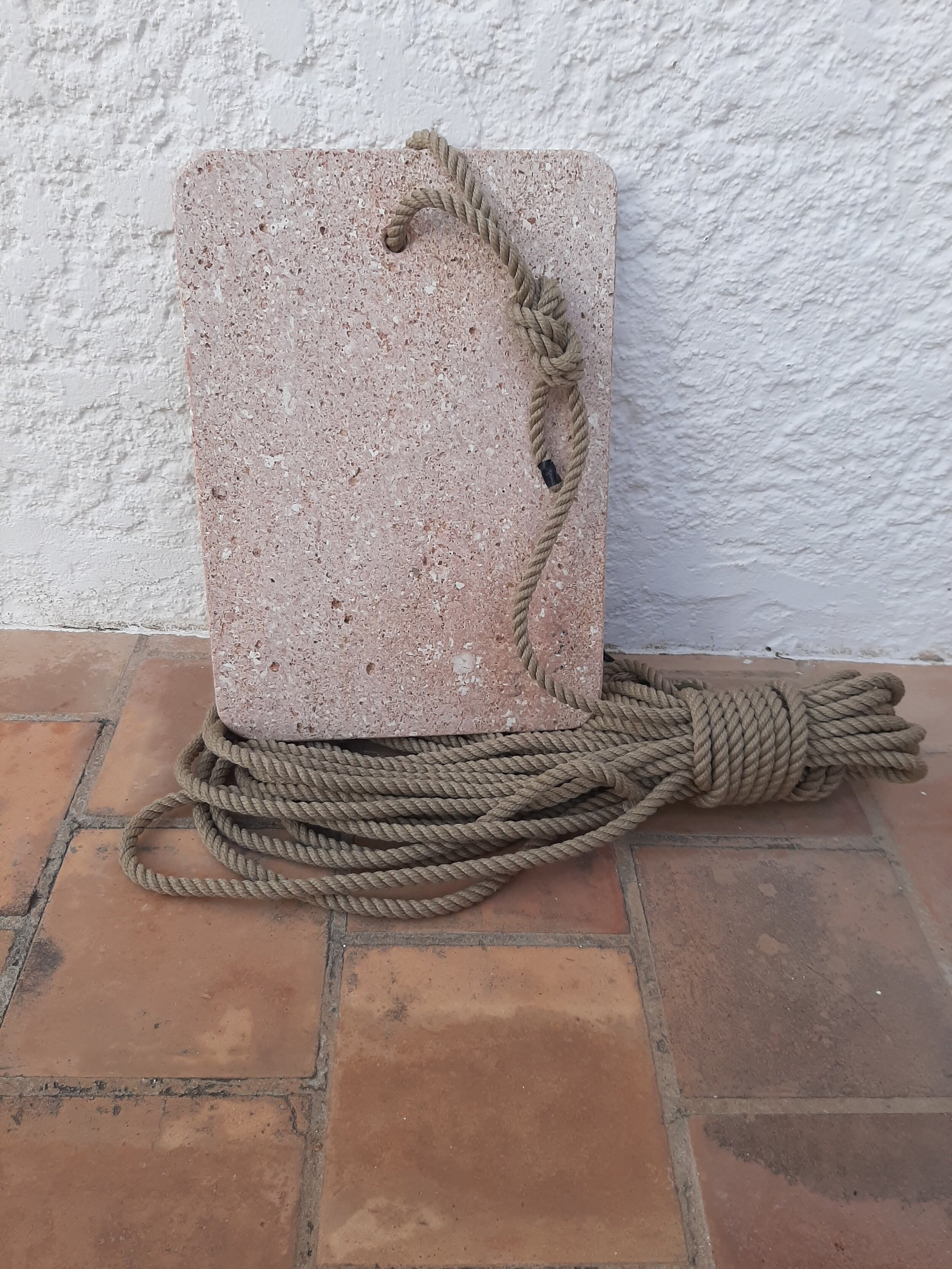Pictured below is another new toy; a Diving Stone, properly named a Skandalopetra.
Skandalopetra diving dates back to ancient Greece as a diving technique used by sponge fishermen: A diver would make a ballasted descent while holding the stone and using its shape to steer and brake as required. The diver´s companion on a boat would retrieve him using the attached line. According to history, this technique was used as far back as the times of Alexander the Great.
In 1913, a Greek diver named Stathis Hatzis made a Skandalopetra dive to 88 metres near the island of Karpathos. This four minute dive was the deepest of a series of dives over several days as he searched for the lost anchor of the Italian battleship Regina Margherita. He succeeded in finding the anchor and securing a line, allowing for the anchor´s retrieval. His 88m dive is widely considered to be the first recorded freediving record. It is interesting to note that Stathis Hatzis did not have the confidence of the Italian naval doctors who examined him before the dive: He was unable to hold his breath for even one minute on the surface and was a heavy smoker. It seems that his dive reflex was particularly well-developed from his many years diving for sponge.
Now, this discipline has seen a resurgence as a competitive sport. According to CMAS rules, the stones must be made from Granite or Marble and weigh between weight and fourteen kilograms. Dives are made without wetsuits- only a swimming costume and nose-clip are permitted so it is certainly not a winter sport!
My Skandalopetra (pictured) is a prototype made from limestone (which I chose because it is cheap, easy to shape and beautiful- it is made from fossilised shells) and I shall use it to practice during the summer. I love the idea that we can, to some extent, re-enact history, as we dive from a classic lateen boat using an ancient technique (with a stone made from even more ancient shells).
